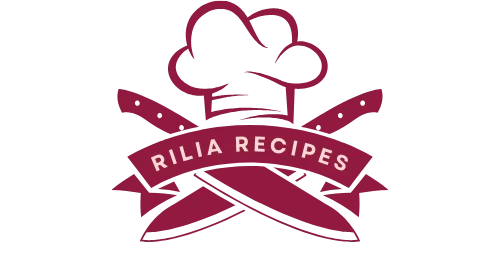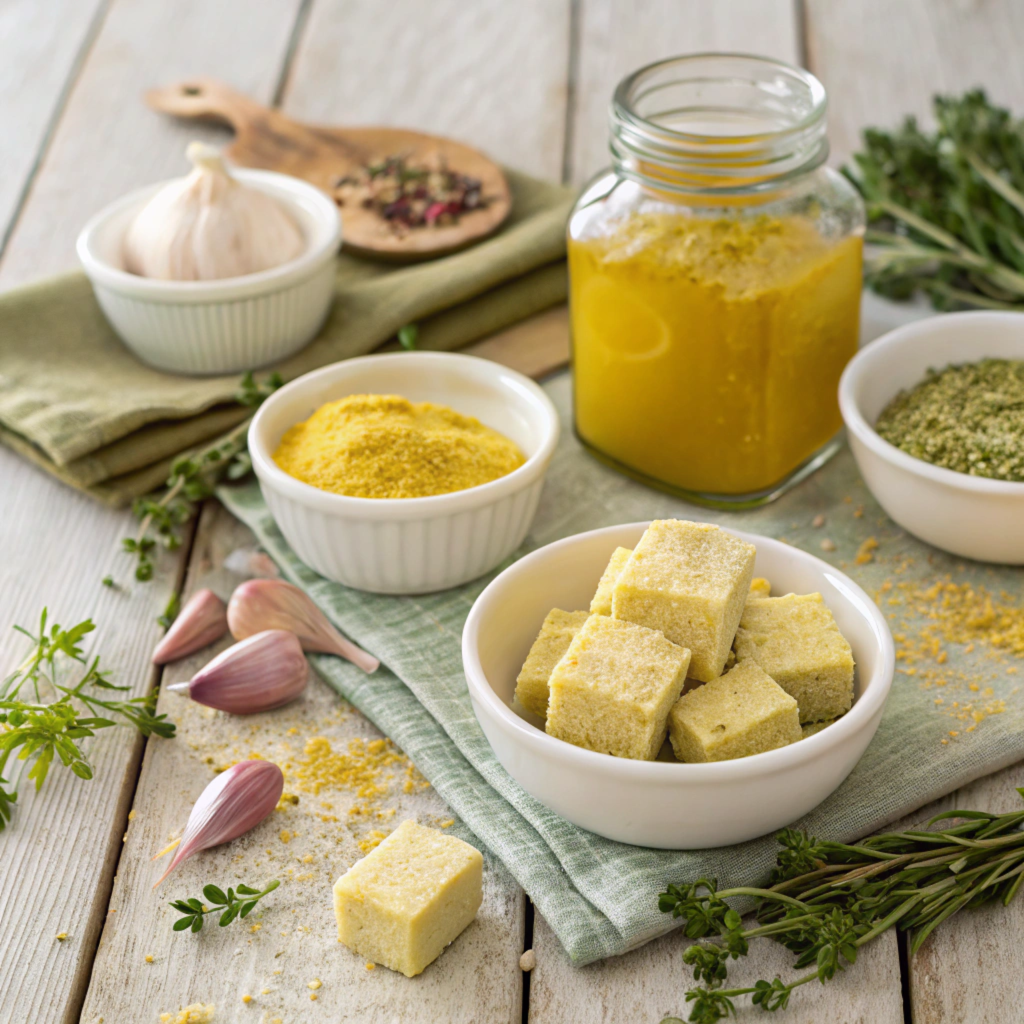Introduction
Chicken bouillon is a kitchen staple. It’s packed with flavor and makes cooking quick and easy. Whether you’re preparing soups, stews, or sauces, it adds a rich and savory taste. Many people keep it in their pantry because it lasts a long time and is simple to use.
Bouillon often comes in cubes, powders, or liquid form. Just dissolve it in hot water, and you’re ready to go. It’s also affordable, making it a popular choice for home cooks and chefs alike.
In this article, we’ll explore what chicken bouillon is, its history, nutritional value, and health benefits. We’ll also share its best uses, recipes, and buying tips. By the end, you’ll know how to make the most of this versatile ingredient.
What Is Chicken Bouillon?
Chicken bouillon is a concentrated flavoring made from chicken stock, herbs, and seasonings. It’s often dehydrated, so it can be stored for months without spoiling. You simply rehydrate it with water to create a quick broth or cooking liquid.
It’s an easy substitute for homemade chicken broth. That’s why busy households love it. It saves time and still delivers great taste.
A Brief History of Chicken Bouillon
Chicken bouillon has been around for centuries. People have used dried meat and bone extracts as early as ancient times. However, modern bouillon cubes became popular in the early 1900s.
Companies like Maggi and Knorr introduced bouillon cubes to the market. These small, compact cubes were easy to carry and use. Soldiers and travelers relied on them for quick meals.
Today, bouillon is available in many forms—powdered, liquid, and low-sodium options. It has remained a trusted ingredient in kitchens worldwide.
Why Is Chicken Bouillon So Popular?
Chicken bouillon stands out because it’s convenient. You don’t need to simmer bones for hours to make broth. Instead, you can mix bouillon with water in minutes.
It’s also versatile. You can add it to soups, season grains, or use it as a marinade base. Plus, it’s budget-friendly. One jar or box can flavor dozens of meals.
Another reason for its popularity is its long shelf life. Unlike fresh broth, bouillon doesn’t spoil quickly. You can store it in your pantry and always have it ready when needed.
Nutritional Profile of Chicken Bouillon
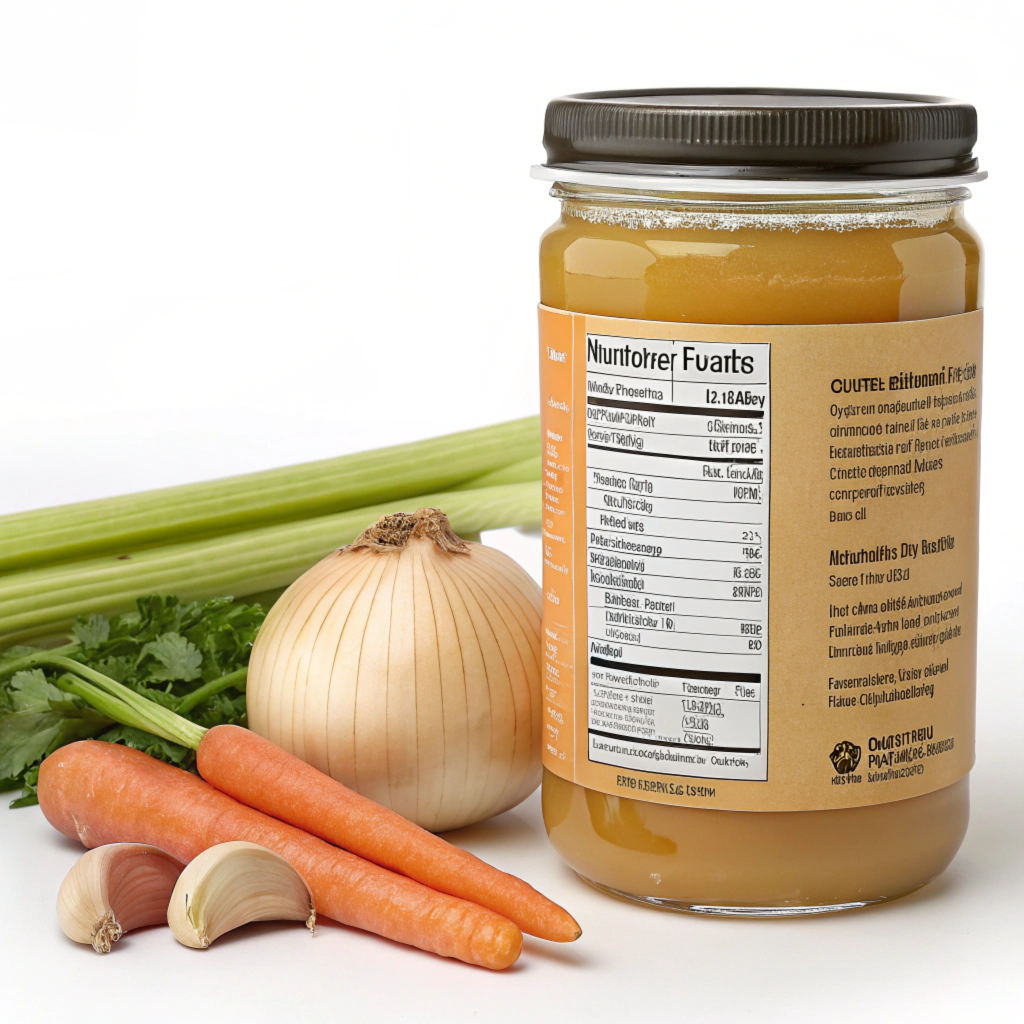
What’s in Chicken Bouillon?
Chicken bouillon may be small, but it’s packed with flavor and nutrients. It’s made from chicken extracts, salt, spices, and herbs. Many brands also add vegetables, garlic, and onion to boost taste.
Most bouillon products contain added flavors like yeast extract or MSG. These ingredients help enhance the savory taste, known as umami. However, some versions skip MSG for a more natural option.
Calories and Macronutrients
One serving of chicken bouillon is usually low in calories. A single cube or teaspoon of powder often contains 5 to 10 calories. This makes it perfect for low-calorie diets.
Bouillon has little to no fat. However, it’s rich in sodium, which adds flavor. Because it lacks protein and carbs, it’s often used for taste rather than nutrition.
Vitamins and Minerals
Chicken bouillon may include small amounts of vitamins and minerals. Many brands fortify their products with potassium, calcium, and magnesium. These minerals help balance electrolytes and keep your body hydrated.
Some versions also include iron, which supports energy levels. However, the amount of vitamins depends on the brand and recipe. Always check the label to see what’s inside.
Sodium Levels – A Key Concern
Sodium is one of the main ingredients in chicken bouillon. It helps preserve the product and enhances flavor. But too much sodium can lead to high blood pressure.
For those watching their salt intake, low-sodium options are available. These versions keep the taste while reducing sodium levels. Using homemade bouillon is another way to control salt.
Is Chicken Bouillon Healthy?
Chicken bouillon can fit into a balanced diet. It’s great for flavoring dishes without adding fat or sugar. It’s also useful for hydrating when you’re sick.
However, eating too much may lead to excess sodium intake. For a healthier choice, look for organic, gluten-free, or low-sodium options.
How Does Chicken Bouillon Compare to Broth?
Bouillon and broth are similar, but they’re not the same. Broth is made by simmering chicken, vegetables, and herbs in water. Bouillon, on the other hand, is a concentrated version, often dried or in liquid form.
Bouillon is faster to use, while broth may offer a fresher flavor. Both can work in recipes, depending on your needs.
Health Benefits of Chicken Bouillon
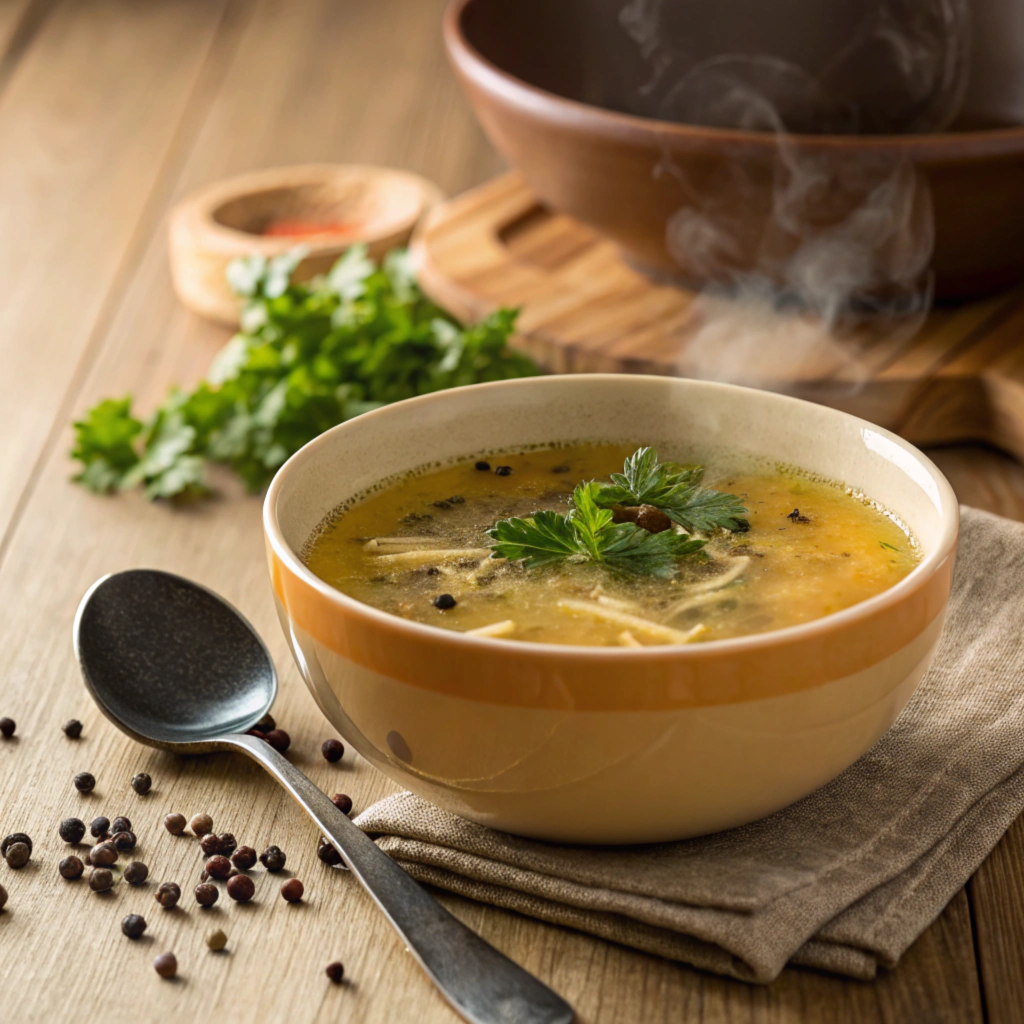
How Chicken Bouillon Supports Health
Chicken bouillon provides warmth and comfort, especially in creamy dishes that highlight its flavor. One excellent recipe to try is Garlic Parmesan Chicken Pasta – A Creamy Classic Dish, which combines the richness of chicken flavors with creamy pasta textures.
Helps with Digestion
Warm liquids, like chicken bouillon, are easy to digest. They can soothe the stomach and may help reduce bloating.
Drinking bouillon can also keep your digestive system hydrated. This makes it a good choice for anyone recovering from illness or dehydration.
Supports the Immune System
Chicken bouillon can be comforting during colds or flu. Its warmth helps clear nasal passages and soothes the throat.
Many versions also contain garlic or onion, which may boost the immune system. These ingredients have natural antibacterial properties.
Aids in Hydration
Chicken bouillon is mostly water, so it helps prevent dehydration. Its salt content also restores electrolytes, making it useful after exercise or illness.
Because it’s light, it’s often recommended for people who can’t handle heavy meals.
Provides Nutrients for Recovery
When you’re sick or tired, chicken bouillon can offer comfort and nourishment. Its minerals, like potassium and magnesium, support muscle recovery.
The warm broth is also gentle on the stomach. It’s perfect for people recovering from surgery or stomach issues.
Low in Calories but High in Flavor
Bouillon is a great choice for low-calorie diets. It adds taste without extra fat or sugar.
Because it’s flavorful, it can replace higher-calorie sauces and seasonings. This makes it helpful for weight management.
May Reduce Cravings
The rich taste of chicken bouillon can satisfy cravings for salty foods. Drinking a cup may help you avoid unhealthy snacks.
It also works as a light snack between meals, keeping you full and hydrated.
Supports Detox Plans
Many detox diets use chicken bouillon as a base. It helps flush toxins while providing minerals and hydration.
Since it’s gentle, it pairs well with vegetables and herbs used in cleansing programs.
Culinary Uses of Chicken Bouillon
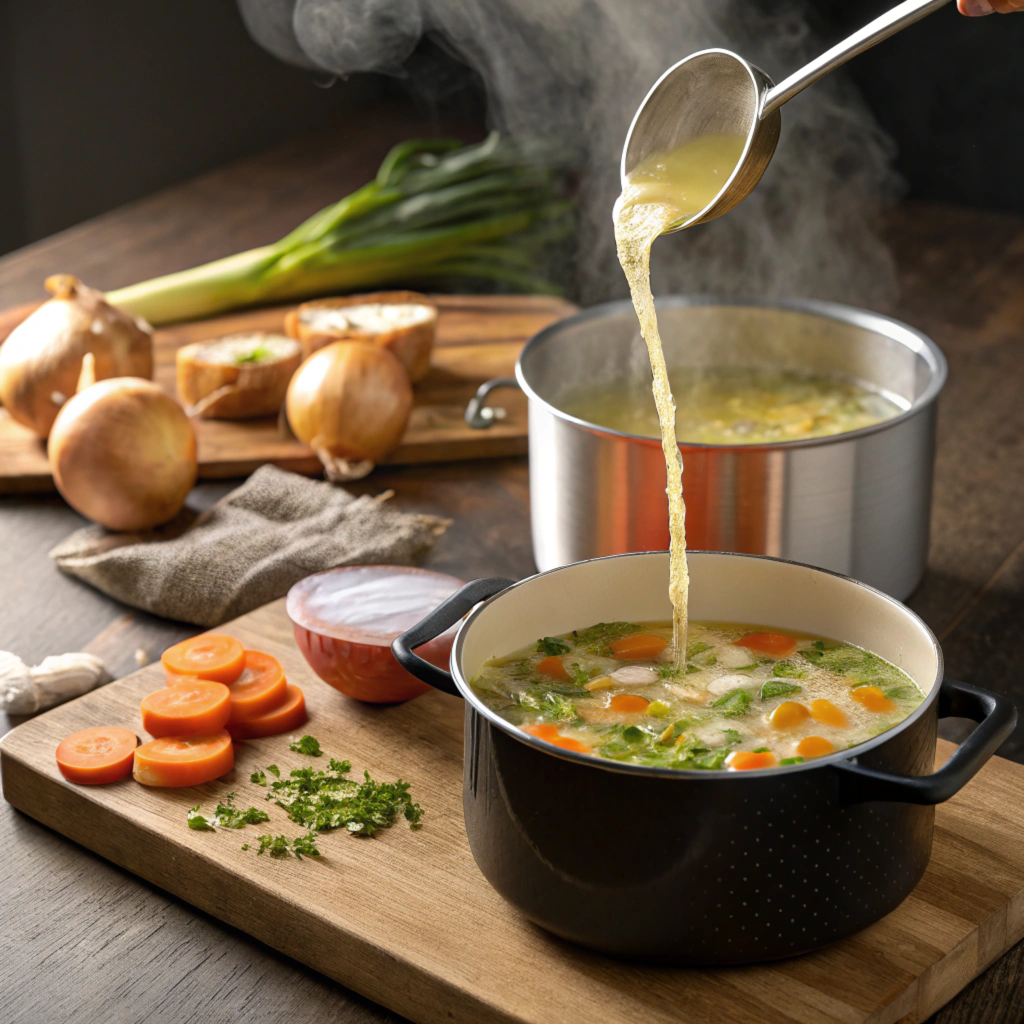
Cooking with Chicken Bouillon
Chicken bouillon is perfect for seasoning dishes like soups, stews, and sauces. It also works well in pasta recipes that need a rich and creamy taste. For example, you can try this Garlic Parmesan Chicken Pasta – A Creamy and Delicious Recipe to experience how chicken bouillon enhances flavors in pasta dishes.
Let’s explore some of its most popular uses in cooking.
Perfect for Soups and Stews
Bouillon is a base for soups and stews. Simply dissolve it in hot water, and you’ll have a flavorful broth in minutes.
It works well with vegetables, beans, and meats. Add it to homemade chicken noodle soup or vegetable stew for extra depth.
Enhances Sauces and Gravies
Need a quick sauce? Chicken bouillon can save the day. Mix it with water, butter, and flour to create a tasty gravy.
For creamier sauces, add milk or cream. This trick is great for pasta dishes or casseroles.
Seasons Rice, Pasta, and Grains
Cooking grains in plain water can leave them bland. Instead, boil rice, quinoa, or couscous in chicken bouillon.
It infuses the grains with flavor without extra salt or fat. This method is perfect for meal prep or side dishes.
Adds Flavor to Marinades
Chicken bouillon is an excellent base for marinades. Combine it with lemon juice, garlic, and herbs for chicken or pork.
It also works well with vegetables. Just mix it with olive oil and spices before roasting.
Boosts the Taste of Vegetables
Steamed or sautéed vegetables can taste better with a splash of chicken bouillon. It gives them a savory kick without overpowering their natural flavors.
Try adding it to stir-fry dishes or roasted vegetables for extra seasoning.
Makes Quick Ramen and Noodles
Instant noodles often need extra flavor. Adding chicken bouillon to the water can create a richer broth.
It’s a fast way to turn basic noodles into a satisfying meal. Top it off with eggs, veggies, or meat for more variety.
Ideal for Crockpot and Slow Cooker Meals
Chicken bouillon works well in slow cooker recipes. It blends with other ingredients as they cook, creating deep flavors.
Use it for dishes like pulled chicken, chili, or pot roast. It’s a simple way to add taste without much effort.
Homemade Chicken Bouillon Recipes
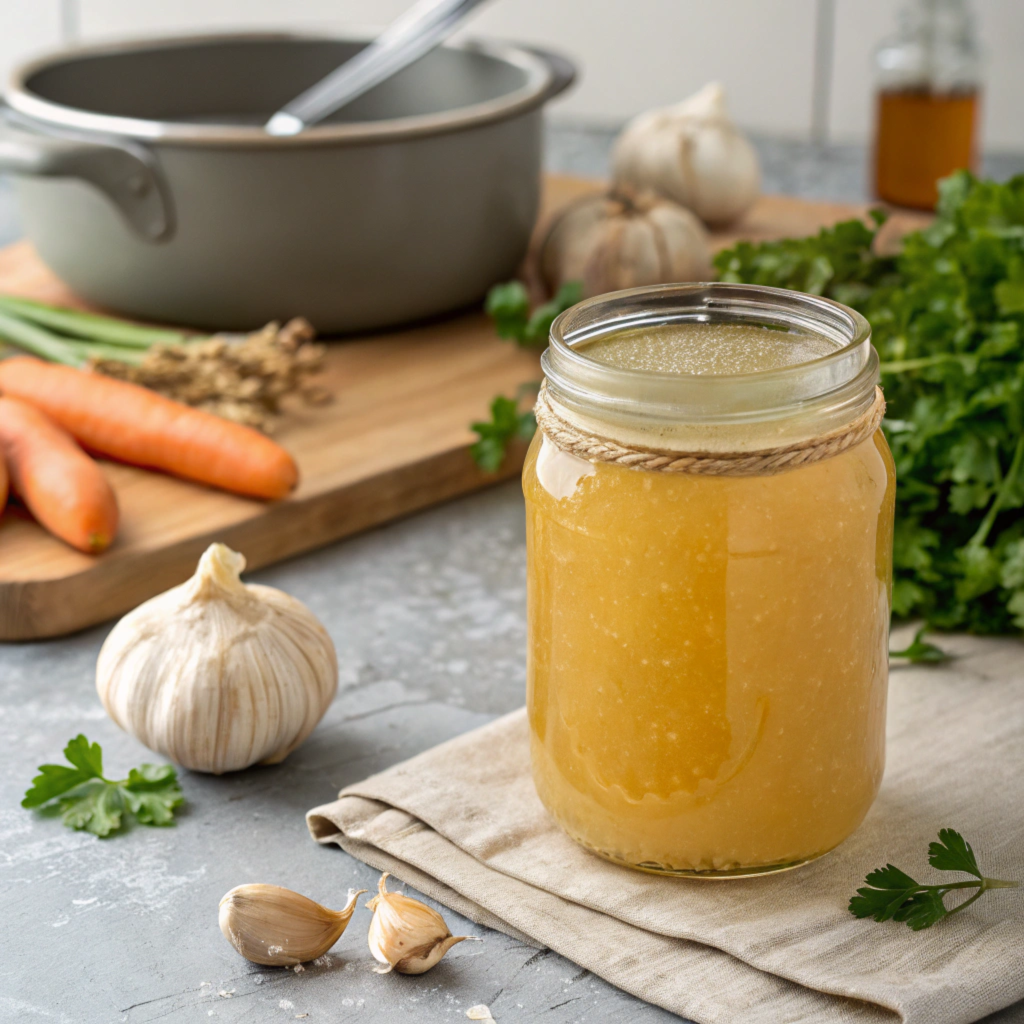
Making Chicken Bouillon at Home
Homemade chicken bouillon is ideal for building flavor in tacos, marinades, and rubs. If you’re looking for seasoning ideas, check out this Homemade Chicken Taco Seasoning Recipe for a quick and flavorful mix. It pairs perfectly with chicken bouillon to create delicious taco fillings.
Below are simple recipes for both liquid and powdered versions.
Traditional Chicken Bouillon Recipe
Homemade chicken bouillon starts with fresh chicken, vegetables, and spices. Begin by simmering chicken bones or meat in a large pot of water. Add carrots, celery, onions, garlic, and parsley. Season with salt, pepper, and bay leaves for flavor.
Let it cook on low heat for 2–3 hours. Skim off any foam that rises to the top. Once done, strain the liquid and discard the solids. Store the broth in jars or freeze it for later.
This method creates a rich and hearty base for soups, sauces, and stews.
Instant Chicken Bouillon Powder Recipe
For a quick powdered version, blend dried ingredients. Use dried chicken powder, garlic, onion, parsley, and celery flakes. Add salt, pepper, and a touch of turmeric for color.
Mix everything in a food processor until it turns into a fine powder. Store it in an airtight jar. Just add one teaspoon of powder to one cup of hot water whenever needed.
This recipe is perfect for busy cooks who need instant flavor.
Low-Sodium Bouillon Alternative
Many store-bought options contain high salt levels. If you want less sodium, make a lighter homemade version. Use roasted chicken bones, fresh herbs, and extra vegetables.
Skip the salt or add just a pinch. You can always season dishes later if needed. This version is ideal for those watching their sodium intake.
Vegan and Vegetarian Bouillon Options
Vegetarians can still enjoy rich flavors. Replace chicken with mushrooms, carrots, leeks, and herbs. Add nutritional yeast for a savory taste.
Simmer the vegetables in water for about an hour. Strain the liquid and store it as broth. You can also dehydrate the mix to make a powdered version.
This plant-based bouillon works well in soups, sauces, and grain dishes.
Tips for Storing Homemade Bouillon
Proper storage keeps homemade bouillon fresh. For liquid broth, freeze it in small portions. Ice cube trays make it easy to grab single servings.
Powdered bouillon should go in airtight jars to stay dry. Keep it in a cool, dark place to preserve flavor.
Label your containers with dates to track freshness. Most homemade bouillons last up to three months in the freezer.
FAQs
Is Chicken Bouillon the Same as Chicken Broth?
No, they are different. Chicken broth is made by simmering chicken, vegetables, and herbs in water. Bouillon is a concentrated form, often dried or powdered, and needs water to create broth. Bouillon is faster to prepare and lasts longer in storage.
Can I Substitute Chicken Bouillon for Chicken Stock?
Yes, you can. Dissolve bouillon in water to create a quick stock. For recipes needing richer flavor, add extra vegetables or spices to boost taste.
Is Chicken Bouillon Gluten-Free?
Not all bouillon products are gluten-free. Some brands add ingredients that contain gluten. Always check labels to be sure. Many companies now offer gluten-free versions.
How Much Chicken Bouillon Should I Use?
Use one cube or one teaspoon of powder per cup of water. Adjust the amount if you prefer a stronger or lighter flavor. For soups or stews, taste as you go and add more if needed.
Are Low-Sodium Options Available?
Yes, many brands offer low-sodium bouillon. These are great for people who need to watch their salt intake. Homemade bouillon is another way to control sodium levels.
Can Vegetarians Use Chicken Bouillon?
Vegetarians should avoid traditional chicken bouillon. However, plant-based versions are widely available. These use vegetable extracts and seasonings to mimic chicken flavor.
Conclusion
Chicken bouillon is a versatile and flavorful ingredient that can enhance a variety of dishes. It’s perfect for soups, stews, sauces, and marinades, offering rich taste without adding extra fat or calories. With options like low-sodium and gluten-free varieties, it’s easy to find a version that fits your dietary needs.
For those who prefer homemade options, preparing chicken bouillon at home allows you to control ingredients and flavor. If you’re looking for ways to spice up your meals, consider pairing it with this Homemade Chicken Taco Seasoning Recipe for a flavorful twist.
Whether you’re using it for meal prep or quick fixes, chicken bouillon remains a must-have pantry staple. Experiment with different recipes and enjoy its savory goodness in every bite..
